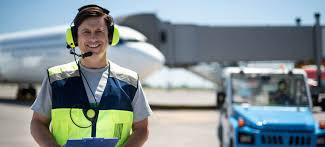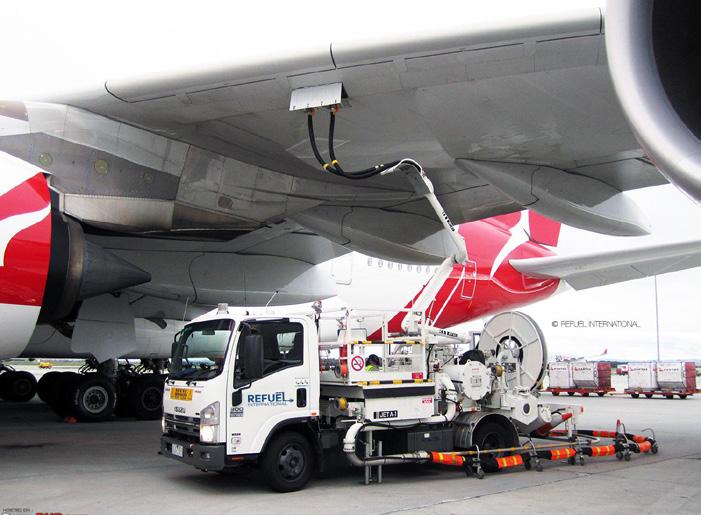

craft from the gate to the runway and vice versa, as well as managing movements to and from maintenance hangars or parking areas.



craft from the gate to the runway and vice versa, as well as managing movements to and from maintenance hangars or parking areas.
We continue with careers in the airport. There are just so many jobs out there. The following is all from here.
What is Ground Control in aviation?
Ground Control is responsible for managing all ground movement of aircraft, excluding active runways. This includes taxiing to and from gates, hangars, and the runway’s threshold.

Ground Control is a specialized segment of air traffic control focusing solely on aircraft movement on the ground. This service is crucial in managing the complex and often congested environment of an airport’s taxiways and aprons.
Exclusion of Active Runways: Ground Control’s jurisdiction extends to all areas of an airport’s surface, except active runways. The control of aircraft on runways is typically handled by a separate entity, often referred to as Tower Control.
Responsibilities of Ground Control
Managing Taxi Operations: Ground Control’s primary responsibility is to manage the movement of aircraft as they taxi. This includes directing air-
Coordination and Safety A key function is to prevent collisions between aircraft and other vehicles, and ensure that aircraft are following the correct taxiways and holding points. This role is particularly crucial in adverse weather conditions or during peak traffic periods.
Efficiency in Ground Movement: By efficiently managing taxi routes and holding patterns, Ground Control plays a significant role in minimizing delays and reducing fuel consumption, which is critical for both economic and environmental reasons.
Communication and Coordination
Pilot Interaction Pilots communicate with Ground Control via radio, receiving specific instructions for taxiing. This communication is two-way, allowing pilots to request clarifications or report any issues on the ground.

Use of Ground Movement Radar In many airports, Ground Control uses radar systems specifically designed for monitoring ground traffic. These systems provide a real-time view of all ground movements, enhancing situational awareness and safety.
Coordination with Other Air Traffic Control Units Ground Control works in tandem with other air traffic control units, such as Tower Control and Approach/Departure Control, to ensure a seamless transition for aircraft moving between the air and the ground.


Critical Role in Airport Efficiency: Ground Control is an indispensable component of airport operations, ensuring the safe, orderly, and efficient movement of aircraft on the ground.
This service is vital for maintaining the overall flow of air traffic, particularly in large, busy airports where ground traffic can be as complex and dense as air traffic.

Impact on Overall Airport Operations: The effectiveness of Ground Control directly impacts an airport’s capacity, safety, and operational efficiency. It plays a key role in minimizing taxi times and delays, thereby enhancing the overall experience for passengers and airlines alike.
Ground Control serves as the orchestrator of all ground movements at an airport, playing a pivotal role in maintaining safety and efficiency in this complex and dynamic environment.


supervised training at an airport.
Key requirements generally include a high school diploma or degree, meeting age limits, passing medical and background checks, and demonstrating strong communication and decision-making skills.
• Citizenship and age: In many countries, you must be a citizen and be under a certain age to begin training.
• Education: A high school diploma or a bachelor’s degree is often required, depending on the specific role and country.
• Medical and security: You will need to pass a medical evaluation, drug screening, and a background check.
• Language: You must be able to speak clearly enough to be understood over communications equipment.
• Enroll in a training program: Apply to a recognized training program or academy.
• Pass entrance exams: Prepare for and pass entrance exams, which may cover reasoning, English, mathematics, physics, and general awareness.
• Complete theoretical and specialized training: Attend basic training and then a specialized “Rating Course” to learn the specific knowledge needed for tower or ground control.
To become an airport ground movement controller, you must complete specific training and certification, meet eligibility criteria, and gain on-the-job experience. This process involves enrolling in an air traffic control academy for theoretical and specialized courses, passing entrance exams, and then undergoing
• Gain practical experience: Complete an on-the-job training (OJT) program where you will work under the supervision of licensed instructors to learn airport-specific procedures.
Get certified and start your career
• Pass final exams: Successfully pass the exams at the end of the OJT program to become a licensed controller.
• Gain experience: With your certification, you can then work independently to manage the ground movement of aircraft.